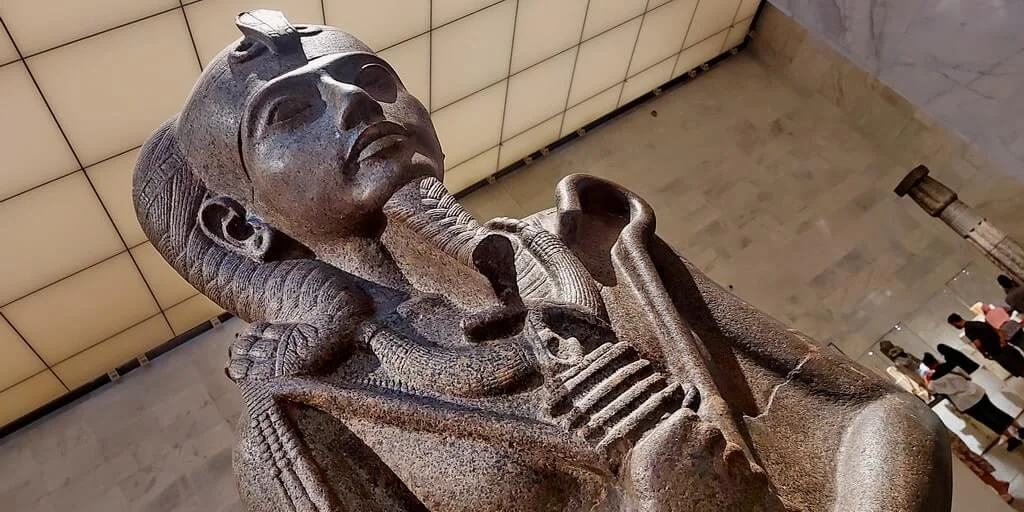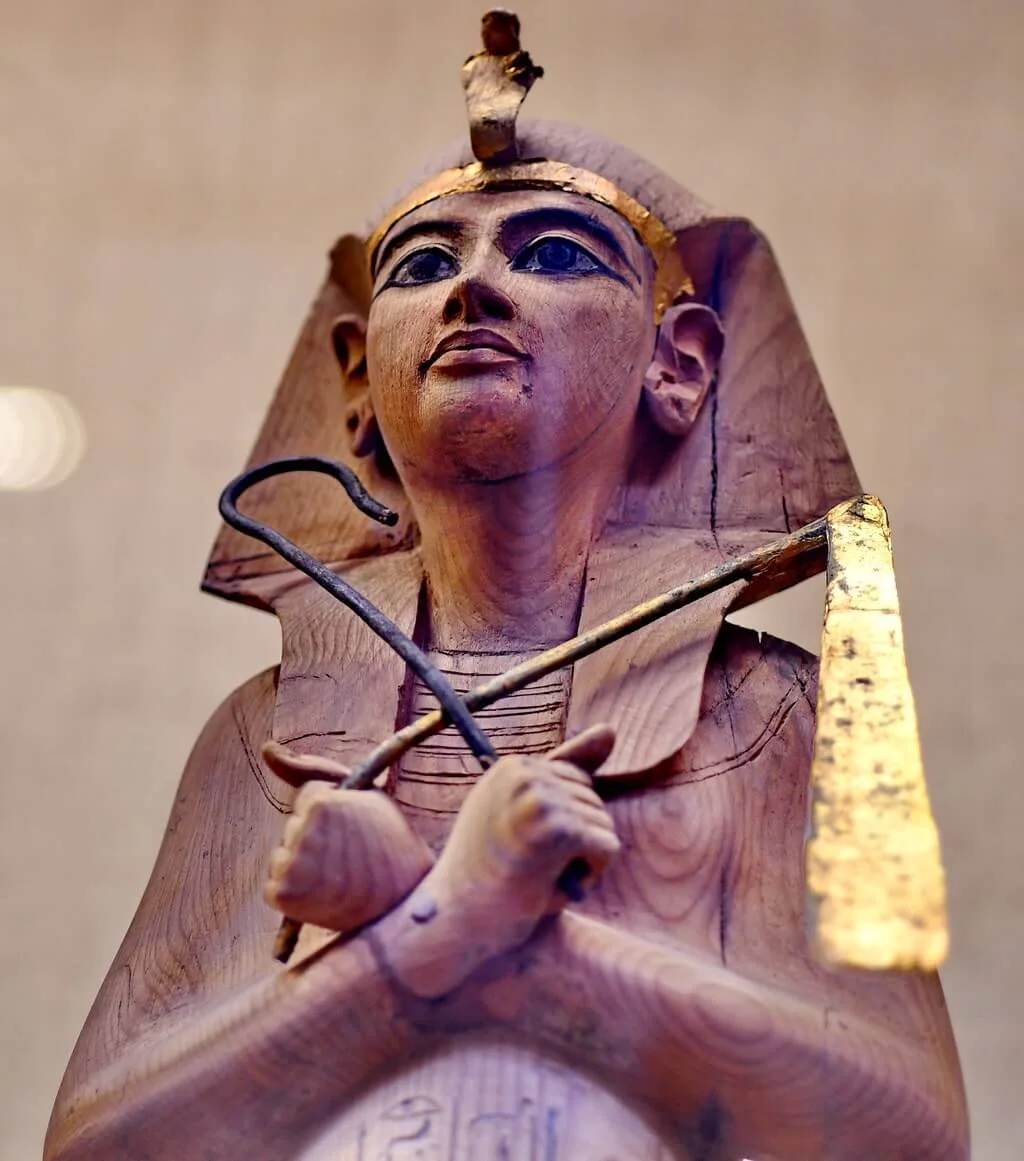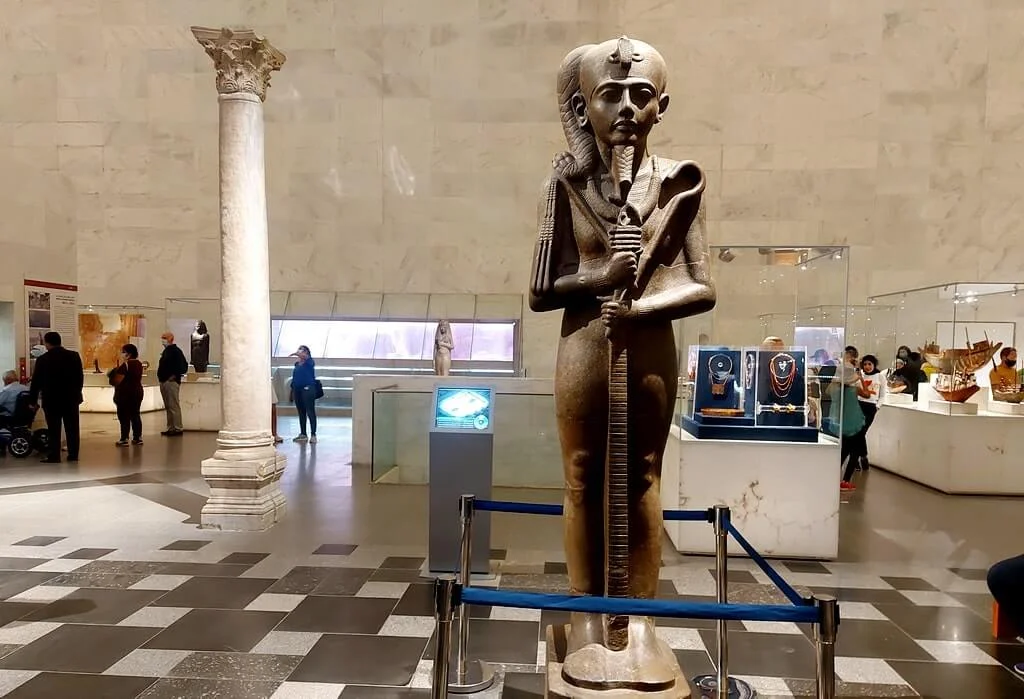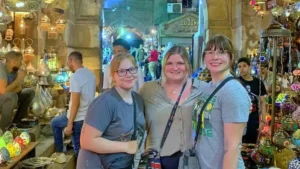Symbols of Pharaoh’s Power and Responsibility
The crook and flail are two of the most iconic symbols of ancient Egypt, universally recognized as emblems of pharaonic authority. Far more than mere staffs, these powerful objects represented the dual nature of the pharaoh’s role: to guide and to punish, to nurture and to control. Together, they symbolized the complete spectrum of royal power and responsibility over the land and its people.
What Are the Crook and the Flail?

The crook (known in ancient Egyptian as the heka) is a shepherd’s staff. It features a long handle with a curved or hooked end. This design naturally connects to its primary meaning: guidance and leadership. Shepherds used similar tools to manage their flocks, gently guiding them or hooking stragglers to bring them back into line.
The flail (called nekhakha) is a more complex instrument. It consists of a short handle with three strands of beads or thongs attached to it, sometimes depicted with segments. While scholars debate its exact origin, many believe it evolved from an agricultural tool, possibly used for threshing grain. This agricultural connection lends itself to its symbolic meaning: provision and discipline.
Symbolic Meaning of the Crook

The crook symbolized the pharaoh’s role as the “shepherd of his people.” Just as a shepherd guides and protects his flock, the pharaoh was expected to care for his subjects, leading them to prosperity and maintaining order. It represented benevolent leadership, guidance, and protection. When the pharaoh held the crook, he visually declared his responsibility for the welfare of every Egyptian. This was not a passive role; it implied active direction and ensured the well-being of the entire kingdom.
Symbolic Meaning of the Flail

The flail’s symbolism is often seen as the counterpart to the crook. If the crook represents gentle guidance, the flail represents enforcement, discipline, and even punishment. It symbolized the pharaoh’s power to maintain Ma’at (cosmic order and justice) by any means necessary. This included punishing wrongdoers, enforcing laws, and protecting the kingdom from internal dissent and external threats. The flail underscored the pharaoh’s ultimate authority to ensure stability and justice, acting as a powerful deterrent. Its agricultural roots also hinted at the pharaoh’s role in ensuring bountiful harvests and the nation’s prosperity through careful management.
The Crook and Flail Together: Dual Nature of Kingship

When depicted together, the crook and flail presented a complete picture of the pharaoh’s authority. They represented the dual nature of kingship: the need for both compassion and firmness, care and control. The pharaoh had to be both a nurturing guardian and a strong disciplinarian. This combination showed that the pharaoh possessed the full range of powers needed to govern effectively and maintain the complex balance of Egyptian society. No single symbol could fully convey the scope of the pharaoh’s responsibilities; it required the partnership of these two distinct emblems.
Historical Context and Usage

The earliest evidence of the crook and flail as royal insignia dates back to the Early Dynastic Period. Over time, they became indispensable components of the pharaoh’s regalia. Pharaohs frequently held both symbols across their chests, especially in their mummified form on sarcophagi and canopic chests. This powerful pose emphasized their continued authority even in the afterlife. We find the most famous example with Tutankhamun, whose golden sarcophagus and other funerary objects prominently feature him holding the crook and flail, which artisans crafted from gold and inlaid with blue faience.
Evolution and Materials

While the core design remained consistent, the materials and craftsmanship for the crook and flail varied over time and according to the pharaoh’s status. Early versions might have used simple wood, but artisans often exquisitely crafted royal examples. They commonly featured gold plating, lapis lazuli, faience, and other precious materials. The elaborate ornamentation reinforced the pharaoh’s divine status and the symbols’ importance. The crook might have striped patterns, while artisans could richly decorate the flail’s beads or segments, showcasing the peak of ancient Egyptian artistry.
Religious and Funerary Significance

Beyond earthly rule, the crook and flail held significant religious meaning. They were closely associated with Osiris, the god of the afterlife and resurrection. Osiris was often depicted holding these symbols, representing his dominion over the underworld and his role as the judge of the dead. By associating themselves with Osiris through these symbols, pharaohs hoped to ensure their own successful passage into the afterlife and eternal kingship. In funerary rituals, the presence of the crook and flail on a mummy or in a tomb guaranteed the deceased pharaoh’s continued power and ability to receive offerings in the realm of the dead. They were essential tools for eternal governance.
The Crook and Flail: Modern Interpretations

Even today, the crook and flail remain powerful images that evoke the grandeur of ancient Egypt. They appear in countless books, documentaries, and museum exhibits worldwide, immediately signifying pharaonic power. While modern interpretations sometimes simplify their meaning, their historical depth reveals a sophisticated understanding of leadership that encompassed both compassionate care and firm governance. These symbols offer a window into the complex political, social, and religious beliefs that shaped one of the world’s most enduring civilizations, highlighting the careful balance ancient Egyptians sought in their rulers.
























